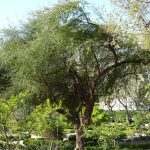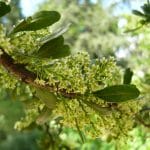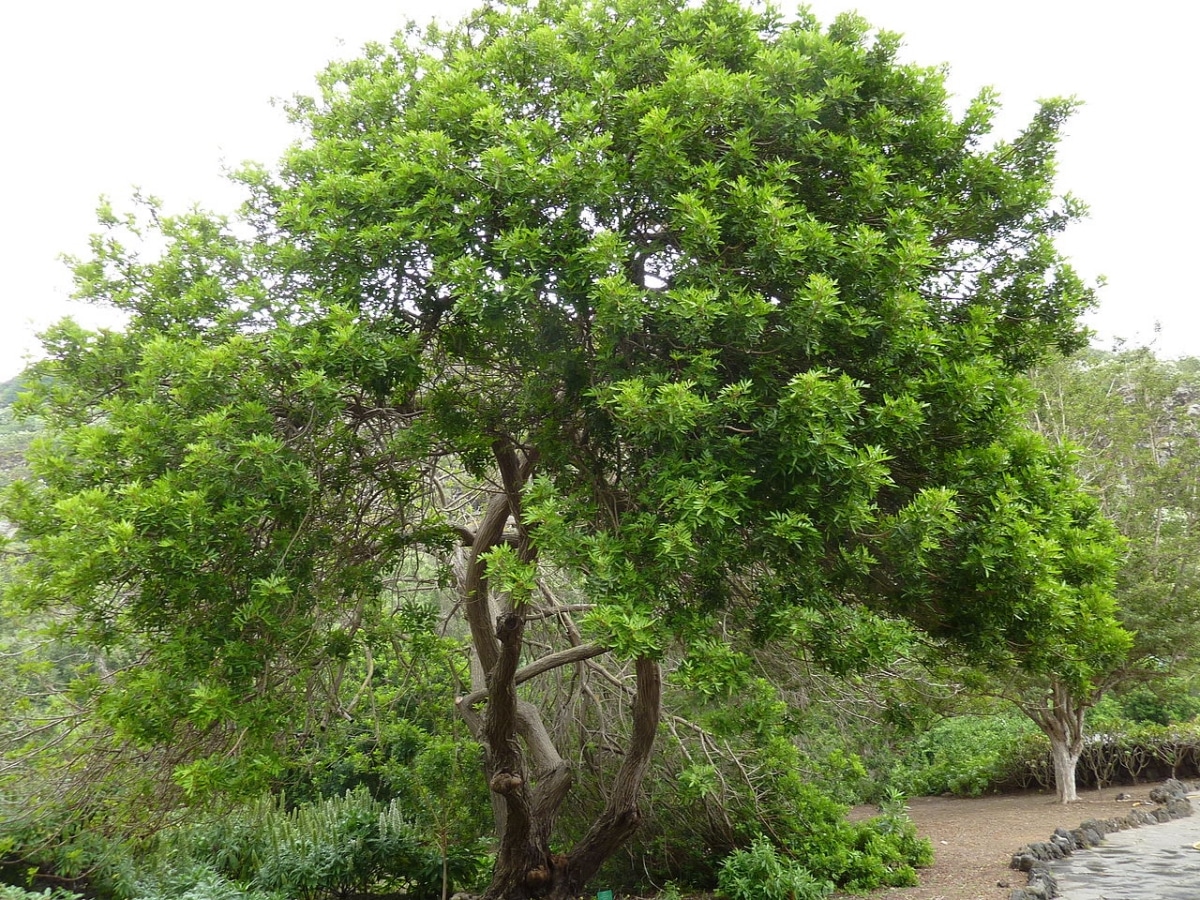
Image - Wikimedia / James Steakley
Schinus are a genus of woody plants with which it is possible to have a shady corner in the garden. Its crowns are wide but numerous leaves sprout from its branches, which remain in them for months until they are renewed by new ones.
In addition, its cultivation in regions where there is little rain is highly recommended, since its water needs are low compared to those of, for example, a typical palm tree. Although they have some drawbacks that we will mention now, without a doubt the Schinus can surprise us.
Origin and characteristics of the Schinus
The Schinus are a genus of large trees or shrubs that belong to the same as the cashew nuts (Anacardiaceae) that live in America. They can reach heights of up to 15 meters, with a trunk diameter of 30-100 centimeters. This one has a crown with slightly hanging branches, and from them sprout leaves that are generally perennial but may be deciduous in some species. These are either odd-pinnate or paripinnate, and are between 9 and 28 centimeters long.
Its flowers sprout from terminal stems which arise from the axils of the branches., forming groups between 10 and 25 centimeters long. When they are pollinated, the fruits, which are globose, begin to ripen. These will measure between 5 and 7 millimeters, and will be red to pink in color. Inside they will only have one seed, of a similar size.
They are popularly known as aguaribay, pepper shakers, pepper tree, false pepper shaker or molles.
Schinus species
There are a dozen species of Schinus, among which the ones that we are going to show you below stand out:
schinus areira

Image - Wikimedia / Penarc
It is an evergreen species native to South America, specifically Argentina, which grows between 10 and 15 meters tall. The trunk is thick, reaching about 100 centimeters in diameter once it matures, and has a brownish-reddish-brown bark. The leaves are odd-pinnate and measure 15-25 centimeters. It blooms in spring, producing groups of flowers called inflorescences which are panicles.
Schinus longifolius
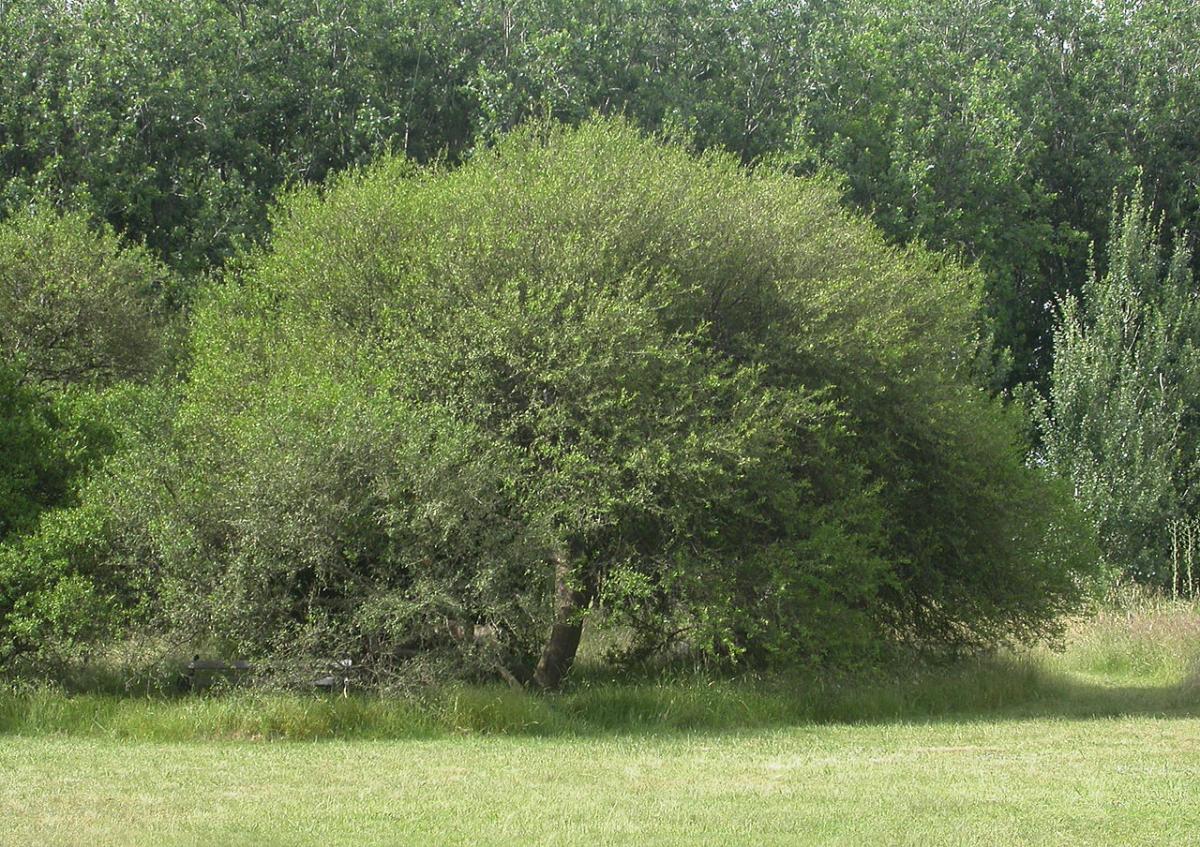
Image - Wikimedia / Gabriela Ruellan
El Schinus longifolius It is an evergreen shrub endemic to South America, where it grows from Argentina to Uruguay. Its height is 2 to 5 meters when mature, although it may be the case that it reaches 8 meters. The trunk is not very thick, since it measures a maximum of 40 centimeters. The leaves are simple, elongated, with a dark green upper surface and a light green underside. It blooms in spring, and its flowers are yellowish-white.
Soft tendons
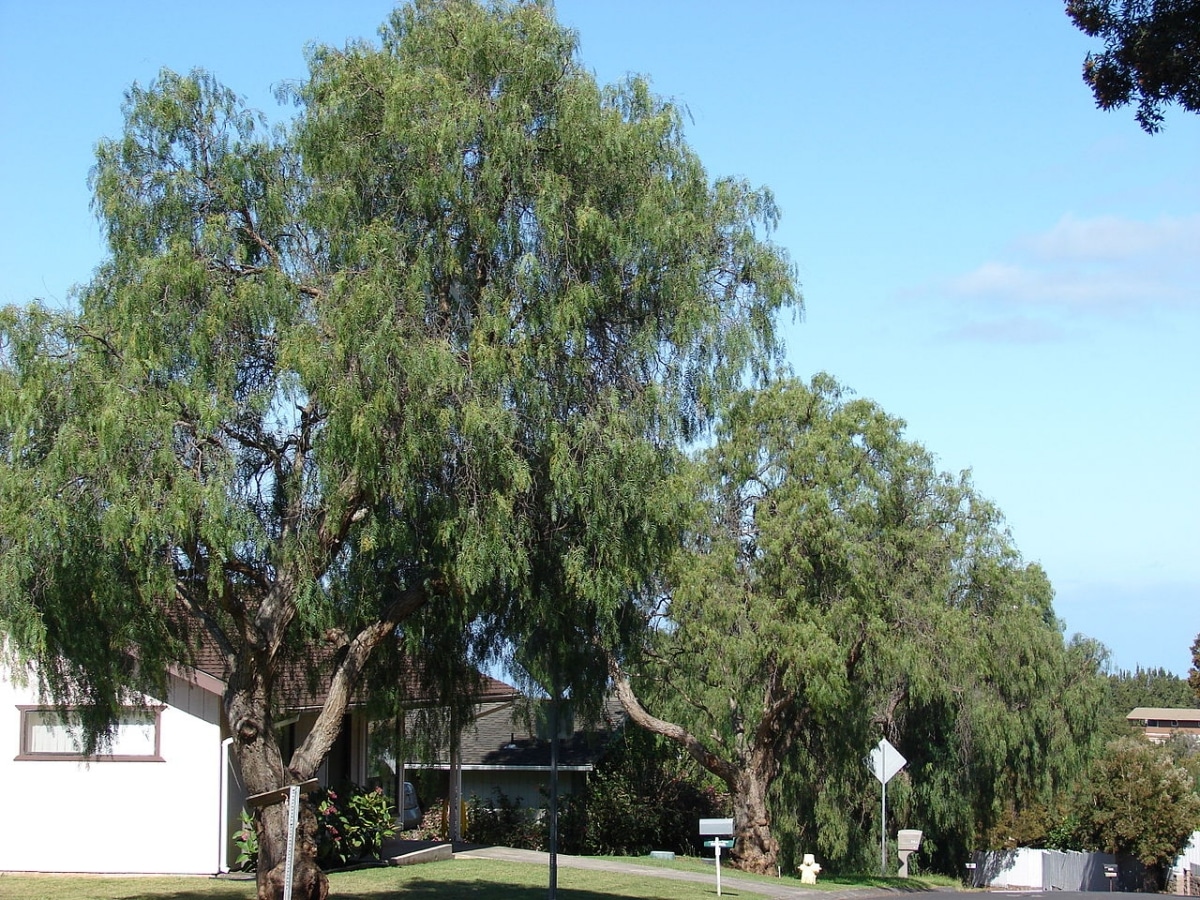
Image - Wikimedia / Forest & Kim Starr
El Soft tendons or aguaribay is the most common species. It reaches a height of 6 to 8 meters in cultivation, with a more or less straight trunk and a 5 meter wide crown. The leaves are evergreen or deciduous, depending on the climate, odd-pinnate and green in color. The flowers sprout during the spring, and soon after the fruits develop, which are red.
Schinus polygamus
- Image - Wikimedia / Cillas
- Image - Wikimedia / Cillas
It is known as huingán, and it is a shrub or evergreen tree endemic from Argentina to Uruguay. Reaches a height of 1 to 4 meters, and its trunk branches very little distance from the ground. The leaves are simple and lance-shaped. The flowers are yellow, and its fruits are dark, from purplish to black.
Schinus terebinthifolius
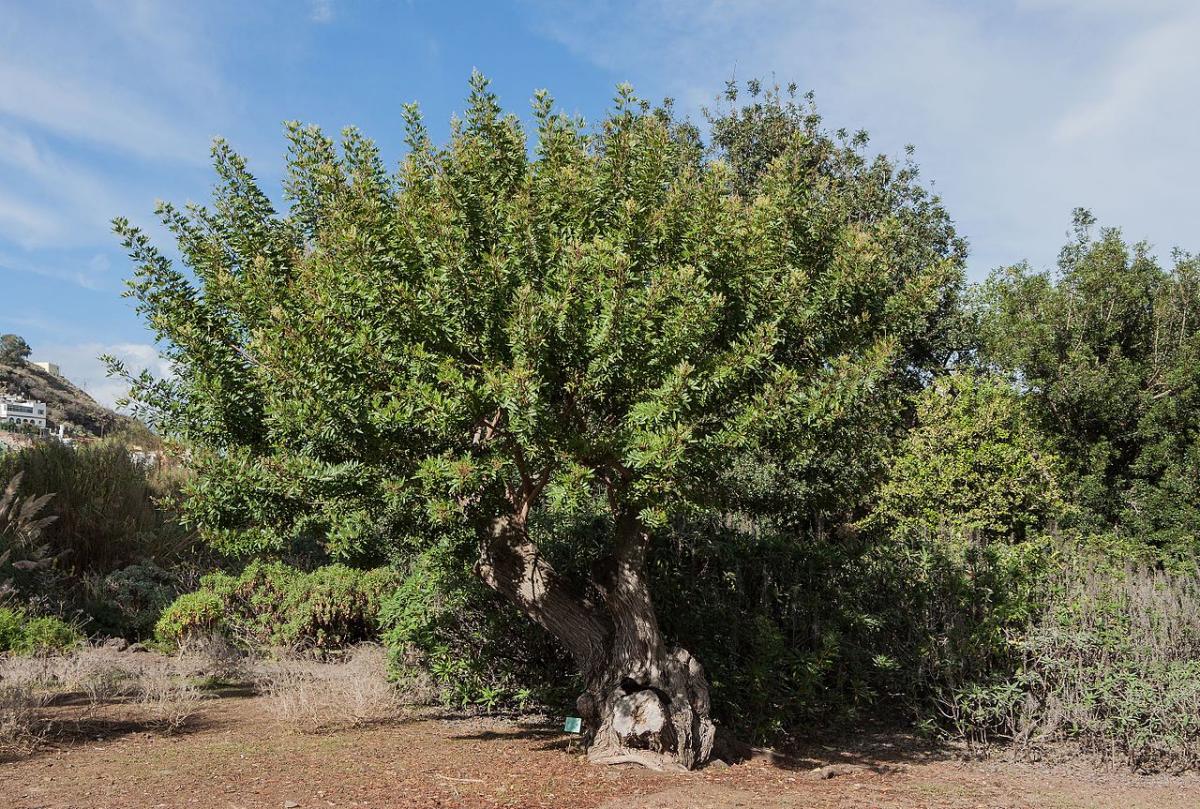
Image - Wikimedia / H. Zell
El Schinus terenbinthifolius is an evergreen tree native to Brazil, Argentina and Paraguay that reaches a maximum height of 10 meters. The leaves are pinnate, and it blooms in spring producing light-colored flowers.
Two varieties are known:
- Schinus terebinthifolius var acutifolius: the leaves are large, 22 centimeters long, and are composed of 7 to 15 leaflets or pinnae. The fruit is pink in color.
- Schinus terebinthifolius var terebinthifolius: the leaves measure 17 centimeters and have 13 pinnae or leaflets. As for the fruit, it is reddish in color.
The species is included in the list of the 100 most harmful invasive exotic plants in the world of the International Union for Conservation of Nature that you can consult by clicking on this link.
What are the care they require?
We have seen the most popular types of Schinus, but ... how do you take care of them so that they grow up healthy? Well, let's talk about it:
Location
The aguaribay must be always outside. In addition, they must be in a sunny area so that they do not lack light at any time.
Its roots are invasive, so it is not advisable to plant them too close to houses or other large plants. The best thing is that there is at least five meters between the tree and what should be protected, be it the house, another tree, a paved ground, and / or etcetera.
Soil or substrate

They are not demanding at all. They grow on poor land, that is, with few nutrients, so that you will not have to worry about this issue. Anyway, you do have to know that it will have a better development if that soil is well drained, since in case of torrential rain for example, the sooner it absorbs the water, the less risk of rotting it will have.
If you choose to grow them in pots, use universal substrate (for sale here), or mulch. If you usually compost, it will also work for you. Choose a container that has holes in its base, and you're done.
Irrigation
These plants they resist drought quite wellProof of this are the numerous Schinus that have been planted and are planted in the Mediterranean region, where there may be months of drought. These trees are watered for one or two years, from time to time, so that they take root without problems, but little by little the waterings are spaced more and more until they are suspended.
For this reason, if you are going to grow them in the garden, I recommend the same: water two or three times a week maximum during the warmest time of year, less the rest. So for two seasons, and from the third you can start not worrying about watering.
Be careful, if you are going to have them in a pot, then you will always have to water them so that they do not dry out, since they have very little soil, and it loses its moisture quickly, especially in summer.
Subscriber
If they are kept in a pot, it is advisable to fertilize them with a universal fertilizer during the warm months. On the contrary, if they are on the ground they will not need it.
Multiplication
The Schinus multiply by seeds in spring. To do this, what is done is to sow one or two seeds in a pot with a universal substrate or with a special one for seedlings (for sale here), and are then placed in full sun.
They germinate very well and quickly, and can take about 10 days if they are fresh. Of course, do not bury them too much: 1 centimeter or less will suffice; in this way the seedling will be able to grow.
Pruning
We do not recommend pruning Schinus, unless they are worked as bonsai of course. But in a garden beyond removing the dry and diseased branches, they should not be pruned any more, since they tend to lose (much) part of their natural beauty.
Rusticity
En general, resist cold and frost down to -7ºC, as well as the heat of up to 40ºC if they have water at their disposal.
Disadvantages of growing Schinus in a garden

At the beginning of this article we told you that, although they are very grateful plants, in reality all that glitters is not gold. For example, el Schinus terebinthifolius it is a very invasive species, because seed that falls to the ground is seed that germinates, so its possession is prohibited in many countries.
What's more, the latex from its branches is toxic if it comes into contact with the skin. To this must be added that it produces many, many fruits, so it is not advisable to have them on the terraces unless you want to frequently sweep the ground.
Another negative point is their estate. As we have already mentioned, they are invasive, so you have to think very well where to plant them. You know: at least they must be about 5 meters from swimming pools, paved floors, tall plants, and so on.
Even so, if you know the species you want to plant well, you don't have to have problems. But of course, before doing anything, you have to check if its cultivation is allowed in our country, because if it is not, it is because it has been proven that it causes serious damage to the ecosystem.
